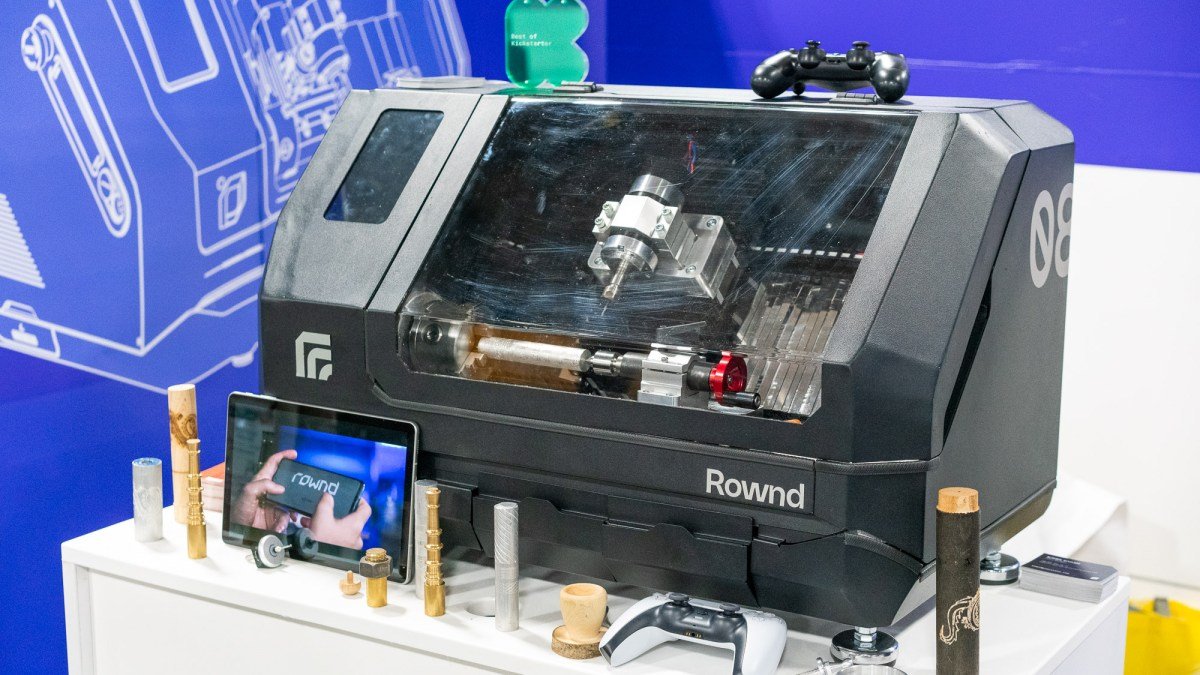After eagerly following the emergence of the Rownd tabletop CNC lathe on Kickstarter last year, I finally had the chance to see it in person at CES in Las Vegas this week. As someone who is constantly intrigued by the growing DIY culture and personal manufacturing movement, I was excited to see what this new player in the market had to offer. The compact and versatile nature of the Rownd Lathe makes it the perfect gateway to creativity, allowing users to effortlessly shape and form various materials, including wood, aluminum, and plastic.
While entry-level CNC mills have been around for some time, CNC lathes have been notably absent from the market. There are certainly affordable options for CNC mills, but they are often difficult to use, mainly designed for experienced machinists. This sets the Rownd Lathe apart, as it aims to be a user-friendly tool for beginners, similar to what Makerbot did for 3D printing, Glowforge did for laser cutting, and Cricut did for vinyl work.
Spotting this gap in the market, Rownd assembled a team of mechanical and electronic engineers, a materials engineer, an architect, and an industrial designer to tackle the project.
One of the standout features of the Rownd Lathe is its affordable price point (retailing at around $5k), but it’s the accompanying software that truly democratizes the design process. With this software, beginners have access to a vast open-source library of pre-made designs, making it easy to get started with creating their own projects.
Simplifying usability was a key focus for the Rownd Lathe experience. The large touchscreen display provides all necessary information at a glance, including usage time, rotation speed, and feed rate. Users can also select CAD data directly from the library and begin using the machine without a separate computer connection. For those who prefer a more manual experience, the touch interface also allows for manual machine control, or Gcode can be uploaded to run the machine like any other CNC lathe.
To add to the hands-on experience, a gamepad controller is also included, allowing users to control the tools and create a more traditional lathe experience. While it may not fully capture the feel of turning metal, it’s a great compromise that ensures this is not just a CNC-only machine. As someone who has had close calls while using engine lathes, I can appreciate the added safety measure of having a hood and gamepad between myself and the rapidly spinning metal.
Upon inspecting the machine in person, it is clear that it is a well-built device, although it is significantly smaller than most lathes I’ve worked with in the past. The maximum diameter of the workpiece that can be accommodated by the machine is 6 inches (150 mm), with a maximum length of 11.5 inches (300 mm). The chuck diameter is notably small, with a maximum work size of 3.25 inches (80 mm). The machine also offers an X-axis travel of 5 inches (125 mm) and a Z-axis travel of 17 3/4 inches (450 mm). Overall, this makes it a useful machine for machining parts of reasonable sizes, depending on the project at hand. The motor boasts approximately 1 horsepower (800W), which is impressive for a machine of this size.
Unfortunately, I did not have the opportunity to try out the Rownd Lathe during my visit. However, the company assures that it plans to begin shipping to pre-order customers in three months and make it available for regular orders a couple of months after that.








